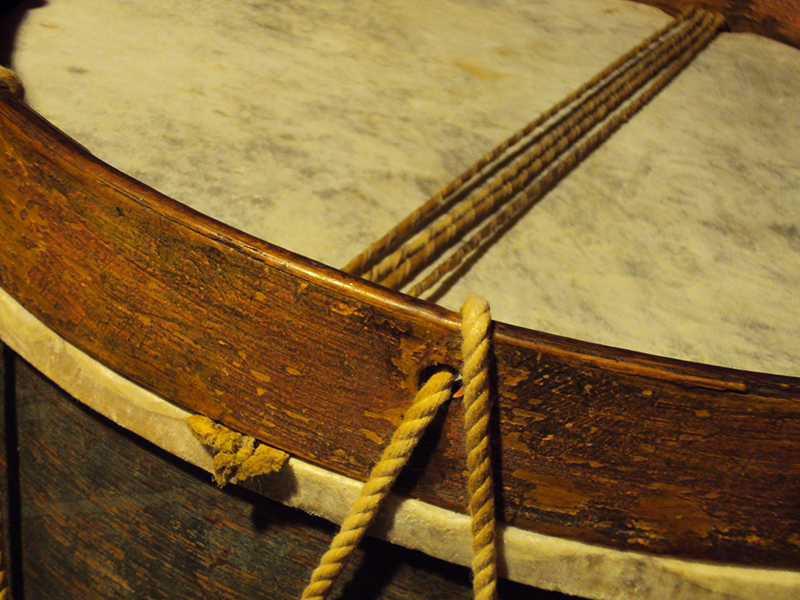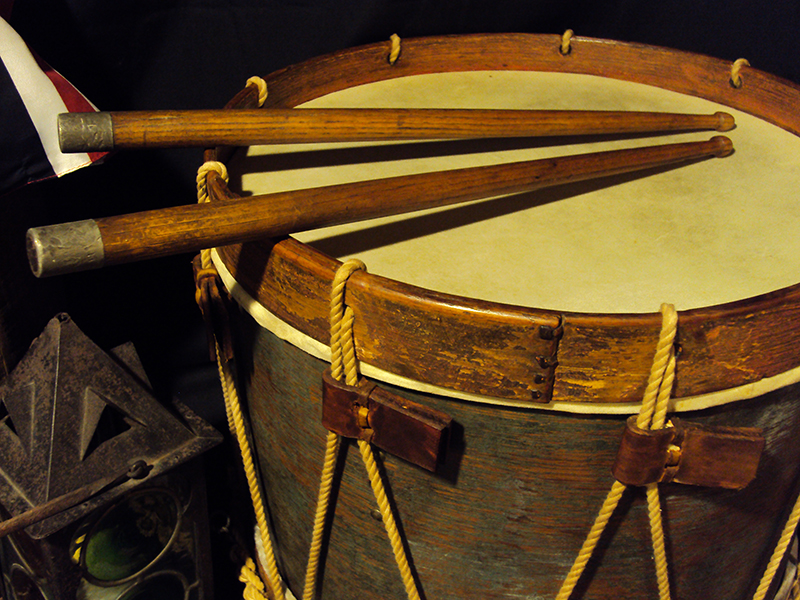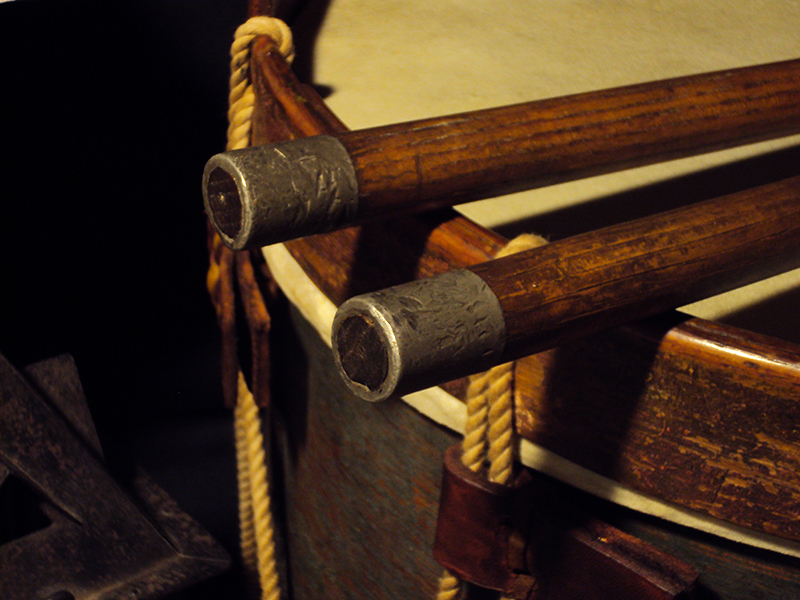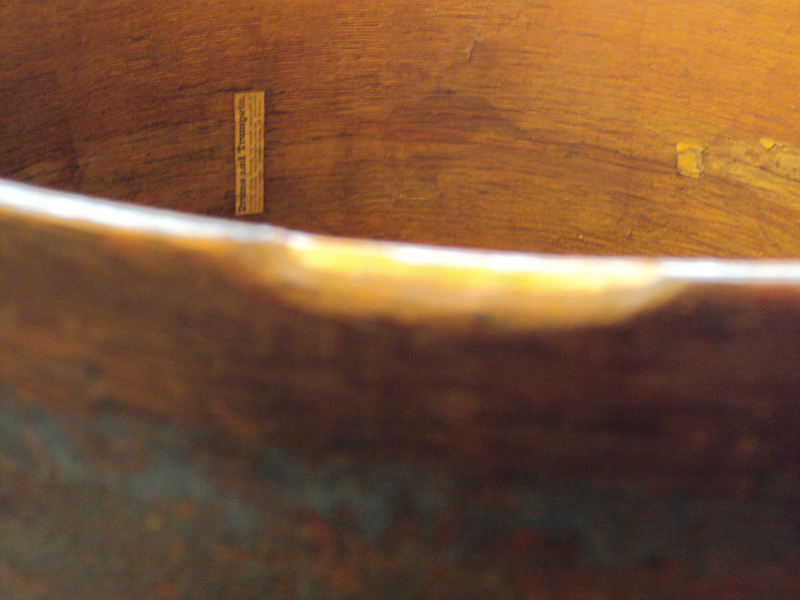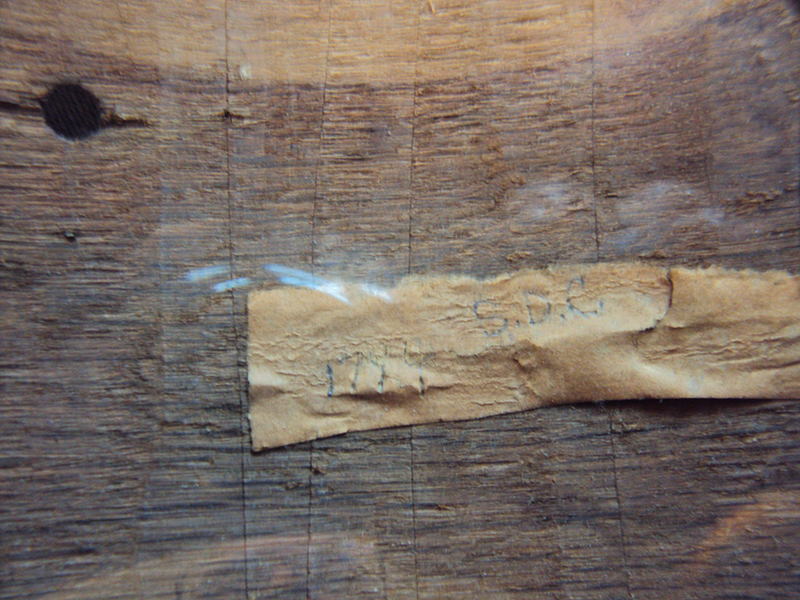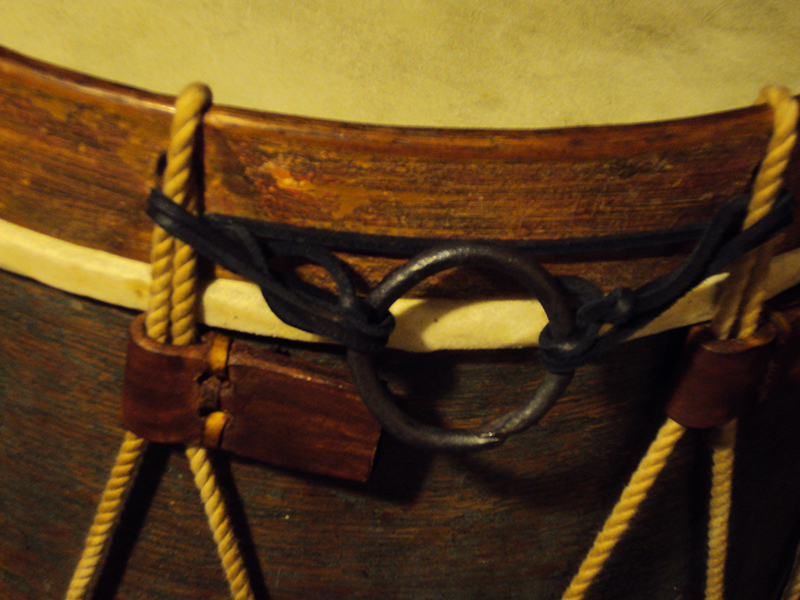Maker: S.D.C.Dated: 1794 Dimensions: 11”(h) x 15.5”(dia)
In the years of George Washington’s presidency, America faced increasing pressure and challenges on the frontier from hostile Indian tribes and the remnants of the British Army. Included in the terms of the Treaty of Paris, 1783, which officially ended the Revolution, Great Britain ceded the lands of the Old Northwest Territory to the United States. This area included most of modern Ohio, Indiana, Michigan, Wisconsin as well as part of Minnesota. However, the indigenous people of the territory rejected the notion that they no longer owned their land. The result was the Northwest Indian Wars.
Playing on the subconscious of the people of the new American nation was the idea that a large standing army was somewhat of a morale wrong. They had just fought a seven year war to evict the British army from their homes. This ideology brought about an under strengthened force comprised of one regiment: the 1st United States Regiment. Recruitment started in 1784 with two companies of artillery from the recently disbanded Continental Army. The 1st United States Regiment comprised of approximately seven hundred men and was all that there was, with the exception of the militia, to protect the entire frontier. Eventually a second regiment of similar strength was raised. England, as well as the rest of the world, could hardly take the new and seemingly weak American nation seriously. This resulted in Great Britain not evacuating the forts it occupied in the Territory as per the terms of the treaty. Hoping that America would fail, Britain encouraged the local tribes to band together and to continue to harass American settlers on the frontier. This was especially the case in the Ohio Territory of the Old Northwest.
By 1791, the American Army had suffered a string of loses culminating in the worst defeat at the hands of Native American Tribes. In the Autumn of 1791, General Arthur St. Clair took 320 men of the U.S. 1st Regiment and over 1100 militia north along the western border of Ohio. Near Fort Recovery, the ill-trained force met with disaster at the hands of the Indians Western Confederacy. There the Army suffered nearly one thousand casualties, including over six hundred dead. Interestingly, included with the battle reports, is the remark that “the Army had lost every drum.”
1794 brought final victory and a relative calmness to the Territory with General Anthony Wayne’s victory at Fallen Timbers on August 20, located in western Ohio. Wayne’s new army, the Legion of the United States, was an extremely well trained force. The Treaty of Greenville in 1795 ceded much of present day Ohio to the U.S. Into this turbulent environment, this drum was made.
In 1794, there were not that many drums left available for use. Built by hand in the cottage industry style of the day, this drum exhibits many of the characteristics of very early American drums.
The shell is made of a single ply of rough-cut oak. On the inside of the shell, there are vertical cuts in the wood to help in the bending process of this thick ply of very strong oak. The two heavy counter hoops are also made of oak strips. Both the shell and the counter hoops are joined by thick scarf joints and fastened by hand-made iron nails and natural glue. The shell was painted entirely blue while the counter hoops have faint remnants of red and blue or black paint as well as old varnish. They may have been painted more than once over the years. The over-all style is very reminiscent of the time. The only adornment on the shell is two brass tacks which appear vertical, top and bottom to the simple, unreinforced vent hole. As with the rest of the shell, they are painted over in blue.
Hand-cut into the bottom of the shell are two snare beds. The bottom counter hoop hasn’t any snare gates, but there is evidence that the drum once sported thick gut snares as the indentations in the bottom of the hoop testify. The most popular method of affixing snares at the time was to simply pinch the two ends of the snares between the drum and counter hoop. The only real way to adjust the snare tension on the head was to pull down on the ropes via the leather ears, sandwiching everything together.
Glued inside the shell, are two paper labels. The first, and oldest of the two, is the maker’s label. Hand written in the old brown of “iron pen,” it simply identifies the maker as “S.D.C.,” and the year “1794.” The second label is type printed and belongs to Frederick Blume. Blume was a small scale maker of pianos, organs, and melodeons and began his career in Pittsburg, PA around 1840. In 1859, he moved his business to 54 Chatham Street, New York City.
Blume’s label reads: “Drums and Trumpets. / Flutes, Violins, Guitars, and musical instruments of / every description. Send stamp for price list. Silk violin / strings, 25c., mailed. Frederick Blume. 208 Bowery.”
Frederick Blume moved his shop to 208 Bowery Street, NYC in 1861, during the Civil War. It is presumable that this drum was reconditioned for use during the War, hence the label. It is also presumable that at this time, it was cut down in height by about three inches to its present height of eleven inches. The presumption that the drum shell was originally about fourteen inches coincides with several irregularities with the shell.
First is that the vent hole is off-centered top and bottom by three inches. Normally the vent would be centered on the shell. The second clue is that there are two different styles of glue rings inside the drum. Made of a different type of wood and obviously made by a different craftsman, it also uses machine made nails which were available around the time of the War, instead of the handmade iron nails present in the rest of the drum. The original glue ring is made of the same wood as the shell and is of a completely different style, and utilizes the same hand-made nails found elsewhere on the drum.
By the time of the Civil War, smaller drums were coming into style and many of the old drums were being cut down to accommodate the trends of the time.
When this old tub came into the collection, the first thought was to keep it in relic condition. After a thorough examination, I realized it was a victim of hard use and abuse. It was a complete catastrophe. There were four different types of leather ears, the most recent circa 1900. Both heads were broken. The snare head was made of a material that resembled cloth, with a pitch-like black coating on the inside that made me wonder if it was even a drum part. The snares were also missing and there were two different types of rope that were spliced together with black thread. When I took the drum apart, I found it was also put together upside down. The newer of the two glue rings was coming off the shell and there was some breakage involved.
The restoration included nine new period correct, handmade leather ears; repair of the glue ring and flesh hoops; new calf skin heads; four old-stock cat gut snares from my old parts box; new cotton rope and a leather rope washer; a hand-made wrought iron drum sling attachment ring and leather lacing; and a thorough cleaning. Over-all condition of the drum is very sound and is in perfect playing condition. It’s a great “rattler!”
Accompanying the drum is a very nice pair of period oak drum sticks, correct in every manner to those common to the eighteenth century. They measure 17 ½” in length and are ¾” in diameter at the butt. As with most known sticks common to the era, they tapper gracefully from the butt all the way down to the “acorn” style tips. Attached to each stick is a heavy, hand-hammered pewter end cap. They are more than likely, original to the drum.
The fact that this drum even exists is amazing, let alone its ability to be played. The original unit is unknown as well as who may have played it over the years. There are those authorities in the historic antique community that believe that it may have originally been a Navy drum. It certainly spent time in the army or militia at one point or another. Use during the Civil War is also very probable. The period into which it was made and initially used was a period of tremendous unrest and uncertainty on the frontier, as well as on the waters of America. For an entire generation, it was a time that was lived somewhat optimistically in the shadow of the Revolution.
From Lancaster County, PA... thoughts from the shop.
- Brian Hill

